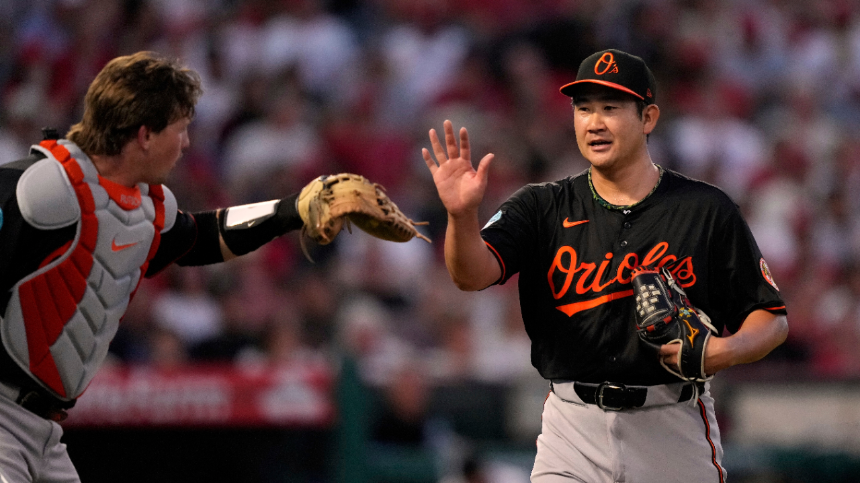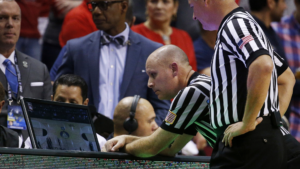
The Baltimore Orioles have long been a team in search of consistent pitching to complement their powerful lineup, and in recent years, they’ve made considerable strides in developing a competitive roster. The addition of Tomoyuki Sugano to their pitching staff, a right-handed starter from Japan, has provided the Orioles with a much-needed boost. His strong performance against the Los Angeles Angels marked a pivotal moment in his MLB career and served as a testament to his abilities on the mound. This game, which showcased Sugano’s impressive pitching prowess, not only helped the Orioles secure a win over the Angels but also highlighted the growing importance of international players in Major League Baseball.
When Tomoyuki Sugano made the jump from Japan’s Nippon Professional Baseball (NPB) to Major League Baseball, there was significant anticipation surrounding his arrival. In Japan, Sugano had been one of the top pitchers, a two-time winner of the prestigious Sawamura Award (given to the best pitcher in the NPB), and had shown the ability to dominate hitters with a variety of pitches, including a devastating splitter, a well-commanded fastball, and an evolving slider. His transition to the big leagues wasn’t without its challenges, as he needed to adjust to the different competition levels and the high expectations that come with playing in the MLB.
The Baltimore Orioles, in particular, had been actively looking for ways to improve their pitching staff. Over the years, they have struggled with consistency from their starting rotation, often finding themselves in a cycle of rebuilding with flashes of potential. Sugano’s signing was seen as a high-risk, high-reward move. It was clear the Orioles were looking for someone with experience and the ability to handle pressure situations, which is exactly what Sugano brought to the table.
Sugano’s early outings with the Orioles were met with a mixture of intrigue and uncertainty. While he had posted stellar numbers in Japan, the NPB and MLB are vastly different environments, and the adjustment could have easily been a steep learning curve. However, Sugano’s preparation and mentality have always been his strength. In interviews before his MLB debut, he spoke about the challenges he anticipated but also emphasized his determination to succeed and adapt quickly.
His first few starts were solid, but nothing compared to his performance against the Los Angeles Angels, a team that was loaded with offensive firepower, notably featuring the likes of Mike Trout, Shohei Ohtani, and Anthony Rendon. Facing a lineup of this caliber posed a significant challenge, but Sugano embraced it, treating it as an opportunity to showcase his skills on one of the biggest stages in baseball.
It was a crisp evening at Oriole Park at Camden Yards when Sugano took the mound against the Angels. The crowd was buzzing with excitement, eager to see how the Japanese import would fare against a lineup that had been known to destroy opposing pitchers. Sugano, however, appeared unfazed by the pressure. From the moment he stepped on the mound, it was clear he was in control.
In the early innings, Sugano was methodical and precise, establishing his fastball in the low 90s and mixing in his splitter, which was particularly effective against left-handed hitters. The Angels’ lineup, which had been highly productive throughout the season, looked somewhat out of sync. Sugano’s ability to keep hitters off balance by changing speeds and locations forced them into weak contact, and he quickly settled into a rhythm. His fastball had great movement, and his splitter was diving out of the strike zone, leaving hitters whiffing at pitches they couldn’t catch up to.
By the third inning, Sugano had already retired the top of the Angels’ lineup in order, including Ohtani and Trout, both of whom were fanning at pitches that were clearly well beyond their reach. His composure on the mound was impressive, and it seemed as though he was in complete control of the game.
As the game progressed into the middle innings, the Orioles’ offense provided Sugano with some run support, allowing him to pitch with more confidence. A two-run homer by Orioles slugger Ryan Mountcastle and an RBI single by Adley Rutschman helped give Sugano a cushion to work with. This, in turn, allowed him to be more aggressive with his pitch selection, knowing he had a lead to protect.
Sugano took full advantage of this, continuing to attack the strike zone with his fastball and breaking balls. In the fourth inning, he struck out two batters in quick succession, inducing weak ground balls and keeping the ball on the ground for most of the game. The Angels’ offense, which had been anticipated to put up a fight, seemed to be thoroughly outclassed by Sugano’s control and poise.
One of the standout aspects of Sugano’s performance against the Angels was his ability to consistently throw strikes while keeping hitters guessing. Unlike many pitchers who rely on overpowering stuff, Sugano’s greatest strength lies in his ability to deceive batters. His splitter, in particular, is a pitch that generates weak contact, often resulting in groundouts or strikeouts when executed properly.
The deception comes from Sugano’s impeccable ability to hide the ball, especially when releasing his splitter. He keeps his body compact and his delivery smooth, which makes it difficult for batters to pick up the pitch. His fastball, while not the hardest, has excellent movement, allowing him to generate weak contact or induce swings and misses. Against a potent team like the Angels, who thrive on getting into hitters’ counts, Sugano’s ability to mix his pitches and keep them off-balance was a masterclass in pitching.
The true test of any pitcher is how they fare against the heart of the lineup. For Sugano, this meant facing off against some of the best hitters in the game, including Mike Trout, Shohei Ohtani, and Anthony Rendon. All three are known for their power and discipline at the plate, but Sugano showed no signs of fear.
Against Trout, Sugano executed a perfect inside fastball, which forced the star center fielder to foul off a pitch. On the next pitch, Sugano dropped in a devastating splitter that Trout swung over. Ohtani, a dual-threat player known for his ability to crush baseballs, was equally flummoxed by Sugano’s mix of pitches. Sugano got Ohtani to ground into a double play in one at-bat, showcasing his ability to control even the most dangerous hitters in the league.
As the game entered the later innings, Sugano continued to command the mound with precision. The Orioles’ bullpen would eventually take over, but by then, Sugano had already done his job. He had gone deep into the game, keeping the Angels’ offense at bay with a series of quick innings and efficient pitching. He finished the game with eight strikeouts, one walk, and only four hits allowed in seven innings of work.
The Orioles’ defense, which had been solid behind him, continued to play its part, and Sugano’s performance was the highlight of a 5-2 victory over the Angels. This win was not only a personal achievement for Sugano but also a statement victory for the Orioles as a team.
Sugano’s dominant performance against the Los Angeles Angels was not just a one-off moment of brilliance. It was a culmination of months of preparation, hard work, and a deep understanding of the game. For the Orioles, it was a sign that their investment in Sugano was paying off. They had acquired a pitcher who could step up in big moments and deliver when needed most.
For Sugano, the victory served as a personal vindication. After years of dominating in Japan, he had finally proven himself on the MLB stage. This game will likely be remembered as the moment he fully established himself as one of the top pitchers in the American League. It was clear that Sugano had made the necessary adjustments to succeed in the MLB, and his performance against one of the league’s top offenses confirmed that he belonged.
In the grand scheme of the 2025 season, Sugano’s performance against the Angels could be a turning point for both the pitcher and the team. The Orioles’ pitching staff, once a weak link, now had a reliable and talented arm to build around. Sugano’s experience and poise on the mound provided a foundation for the Orioles to improve, and his success was an indication that the team could contend for a postseason spot in the coming years.
For Sugano, this game marked the start of what could be a long and successful career in Major League Baseball. His transition from Japan to the U.S. had been closely watched by fans and analysts alike, but after this outing, it was clear that Sugano had made the transition seamlessly. The Orioles had acquired a player who could anchor their rotation and provide leadership both on and off the field.
In the end, Sugano’s dominant performance against the Los Angeles Angels was not just a win for the Orioles—it was a win for international players in the MLB, proving once again that talent knows no borders.





